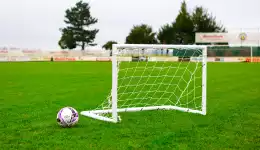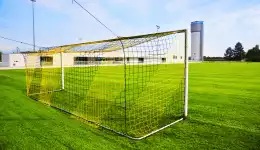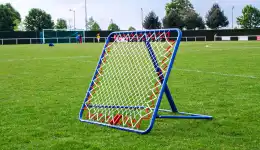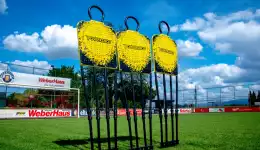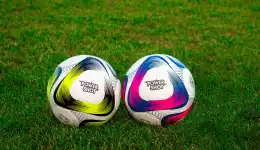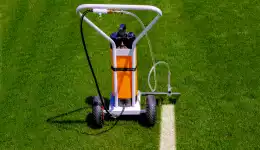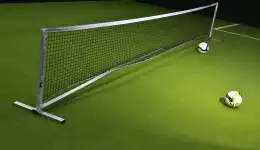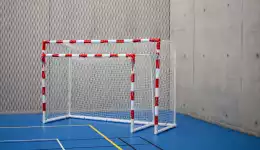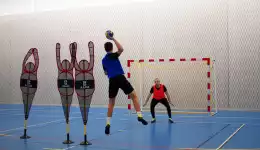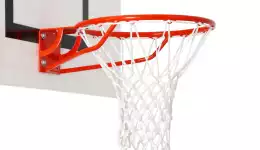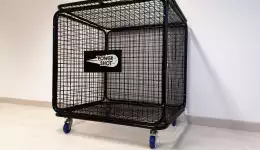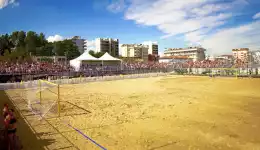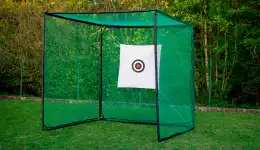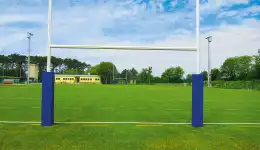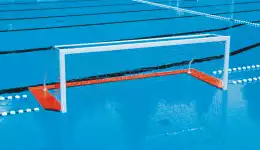Speed and agility drills: how to improve your performance with a complete workout
Speed and agility drills: how to improve your performance with a complete workout
Thespeed andagility are two essential physical abilities both in sport and in everyday life. Thanks to them, we not only react faster, but also move with more control and precision.
That's why includingspeed exercises yagility exercises in your routine is key if you want to perform better, prevent injuries and reach your maximum potential.
Why train speed and agility?
- Speed: Ability to move in the shortest possible time, whether running, jumping or reacting to a stimulus.
- Agility: combination of coordination, flexibility and body control, especially useful in sports with changes of direction such as soccer, tennis or basketball.
Both qualities can be trained with specific exercises. They are not just innate skills: with perseverance and proper planning, anyone can improve.
Types of speed
- Reaction speed: time it takes you to respond to a stimulus (e.g., the start in a race).
- Execution speed: speed with which you perform a technical movement (ball striking, throwing, jumping).
- Maximum speed: The fastest speed you can achieve in a movement.
- Speed-endurance: ability to maintain speed for a prolonged period of time.
Speed drills: examples and benefits
Speed training is essential to increase power, reaction and endurance in any sport discipline.
Detailed benefits of speed drills
- Faster responses to stimuli.
- Increased explosiveness in short movements.
- Less fatigue in intense efforts.
- Better precision in sport gestures.
Practical speed exercises
- Short sprints (20-30 m): increase maximum speed.
- Running + rest intervals: combine endurance and speed.
- Jumps and multi jumps: improve leg power.
- Plyometric exercises: develop strength and reaction speed.
👉 Tip: start with short, progressive sprints, alternating with rest, for an effective and safe workout.
Agility drills: how to improve coordination and control.
Agility allows you to move with moreprecision, speed and safety. It also reduces the risk of injury and improves body posture.
Detailed benefits of agility training
- Improved balance and coordination.
- Increased flexibility and body control.
- Injury prevention.
- Superior performance in sports with changes of direction.
Practical agility exercises
- Coordination ladder: Improves foot speed and control.
- Jumping jacks: increase endurance and agility.
- Ball exercises: develop reflexes and coordination.
- Dynamic stretching: increase joint mobility.
Reaction times vs. execution
A key aspect in speed training is to differentiate between:
- Actions (execution): Movements that we perform voluntarily, such as a sprint or a jump.
- Reactions: quick responses to an external stimulus, such as starting a race or reacting to an unexpected pass.
👉 Training both of these aspects is essential: thequick reaction allows you to anticipate, and fastfast execution ensures that the movement is effective and precise.
The role of nutrition and recovery
Performance doesn't just depend on training: it also depends on what you eat and how you recover.
- Nutrition:
- Protein: Essential for muscle repair.
- Carbohydrates: main source of energy during explosive workouts.
- Healthy fats: necessary for regeneration and hormonal balance.
- Recovery:
- Quality sleep: minimum 7-8 hours.
- Post-workout stretching: Fundamental to maintain mobility.
- Active rest days: yoga, walking or light mobility.
The importance of regular measurements and progress.
Measuring your progress is as important as training.
- Time sprints: to check improvements in times.
- Record jumps and plyometric exercises: to measure power.
- Record loads and reps: to observe progression.
👉 Theregular measurements allow you to adjust your training plan, stay motivated and check the real results of your effort.
Example of weekly planning
- Monday: sprints + short speed drills
- Tuesday: coordination ladder + dynamic stretches.
- Wednesday: light activity (walking, cycling, mobility)
- Thursday: plyometrics + speed exercises
- Friday: skipping rope + agility with ball
- Saturday: mixed circuit (speed + agility)
- Sunday: active rest
Conclusion
Thespeed and agility exercises are a must for any athlete. With a routine that combinessprints, ladder agility, plyometric exercises and ball coordination, you will become faster, more agile and efficient.you will become faster, more agile and efficient.
Remember:
- Difference betweenreaction and execution.
- Do not neglectnutrition and recovery.
- Measure your progress on a regular basis.
👉 With consistency and planning, each training session will be another step towards your best version.

 German : Schnelligkeits- und Beweglichkeitsübungen: Wie Sie Ihre Leistung mit einem kompletten Training verbessern können
German : Schnelligkeits- und Beweglichkeitsübungen: Wie Sie Ihre Leistung mit einem kompletten Training verbessern können  French : Exercices de vitesse et d'agilité : comment améliorer vos performances grâce à un entraînement complet
French : Exercices de vitesse et d'agilité : comment améliorer vos performances grâce à un entraînement complet  English : Speed and agility drills: how to improve your performance with a complete workout
English : Speed and agility drills: how to improve your performance with a complete workout  Spanish : Ejercicios de velocidad y agilidad: cómo mejorar tu rendimiento con un entrenamiento completo
Spanish : Ejercicios de velocidad y agilidad: cómo mejorar tu rendimiento con un entrenamiento completo  Italian : Esercitazioni di velocità e agilità: come migliorare le prestazioni con un allenamento completo
Italian : Esercitazioni di velocità e agilità: come migliorare le prestazioni con un allenamento completo  Dutch : Snelheids- en behendigheidsoefeningen: hoe je je prestaties verbetert met een complete workout
Dutch : Snelheids- en behendigheidsoefeningen: hoe je je prestaties verbetert met een complete workout 
